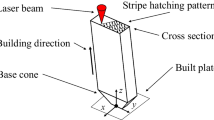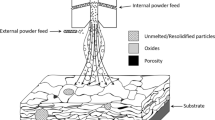Abstract
In this work, the curing and hardness evolution of a two-component polyurethane (PU) coating in four different environments, three of which were solvent evaporation-suppressed conditions, were studied. In contrast to previous studies, the simultaneous use of Fourier-transform infrared spectroscopy, gravimetric analysis, and pendulum hardness allowed a transient mapping of the degree of isocyanate conversion, solids concentration, and coating hardness. Furthermore, to explore in more detail the coupling of the underlying mechanisms, the evolution in the average coating glass transition temperature was estimated by dynamic mechanical analysis, and the data was simulated using the so-called Kelley–Bueche equation. For the curing conditions investigated, the final coating hardness differed by a factor of two, with the lowest values obtained for the evaporation-suppressed conditions. Due to the isocyanate groups reaching full conversion for all four series, the reason for the lower hardness was attributed entirely to the plasticizing effect of residual solvent. Using a Kα value of 0.687 in the Kelley–Bueche equation, the coating glass transition temperature as a function of the PU volume fraction could be successfully simulated and was found to increase from about 282 K at a volume fraction of 0.79 to 319 K at one of 0.93. In addition, when the experimental temperature was lower than the coating glass transition temperature, a proportional increase in the pendulum hardness with the reciprocal loss factor was seen. The effects of catalyst concentration in the coating were also investigated, and this parameter was found to have a strong influence on both the surface conversion, the solids concentration, and the coating hardness. A too fast curing rate shortens the time to vitrification, after which the solvent evaporation rate becomes diffusion-controlled and very low, leading to higher residual solvent contents and significantly lower hardness values. The results obtained provide guidelines for how to optimize ventilation conditions during the curing of solvent-based, thermoset PU coatings.









Similar content being viewed by others
References
Sørensen, PA, Kiil, S, Dam-Johansen, K, Weinell, CE, “Anticorrosive Coatings: A Review.” J. Coat. Technol. Res., 6 (2) 135–176 (2009)
Yi, C, Rostron, P, Vahdati, N, Gunister, E, Alfantazi, A, “Curing Kinetics and Mechanical Properties of Epoxy Based Coatings: The Influence of Added Solvent.” Prog. Org. Coat., 124 (May) 165–174 (2018)
Kiil, S, “Quantification of Simultaneous Solvent Evaporation and Chemical Curing in Thermoset Coatings.” J. Coat. Technol. Res., 7 (5) 569–586 (2010)
Kiil, S, “Mathematical Modelling of Simultaneous Solvent Evaporation and Chemical Curing in Thermoset Coatings: A Parameter Study.” Prog. Org. Coat., 70 (4) 192–198 (2011)
Esmaeilpour, M, Niroumand, B, Monshi, A, Salahi, E, Ramezanzadeh, B, “Effects of Curing Condition on the Surface Characteristics of Two-Pack Polyurethane Coatings Containing Low Surface Energy Additive.” Soft Mater., 13 (3) 144–149 (2015)
Vessot, S, Andrieu, J, Laurent, P, Galy, J, Gérard, JF, “Air Convective Drying and Curing of Polyurethane-Based Paints on Sheet Molding Compound Surfaces.” J. Coat. Technol., 70 (882) 67–76 (1998)
Huang, Z, Ma, X, Qiao, Z, Wang, S, Jing, X, “Pendulum Hardness of Polyurethane Coatings During Curing.” Pigment Resin Technol., 43 (5) 271–276 (2014)
Tambe, SP, Jagtap, SD, Choudhari, RN, Mallik, BP, “Influence of Cross-Linking Agents and Curing Condition on the Performance of Epoxy Coating.” Pigment Resin Technol., 45 (5) 354–362 (2016)
Dušková-Smrčková, M, Dušek, K, “Processes and States During Polymer Film Formation by Simultaneous Crosslinking and Solvent Evaporation.” J. Mater. Sci., 37 (22) 4733–4741 (2002)
Yamamura, M, Horiuchi, K, Kajiwara, T, Adachi, K, “Decrease in Solvent Evaporation Rate Due to Phase Separation in Polymer Films.” AIChE J., 48 (11) 2711–2714 (2002)
Dušek, K, Dušková-Smrčková, M, “Network Structure Formation During Crosslinking of Organic Coating Systems.” Prog. Polym. Sci., 25 (9) 1215–1260 (2000)
Shafiu Kamba, A, Ismail, M, Tengku Ibrahim, TA, Zakaria, ZAB, “Synthesis and Characterisation of Calcium Carbonate Aragonite Nanocrystals from Cockle Shell Powder (Anadara granosa).” J. Nanomater. (2013). https://doi.org/10.1155/2013/398357
Miller, FA, Wilkins, CH, “Infrared Spectra and Characteristic Frequencies of Inorganic Ions.” Anal. Chem., 24 (8) 1253–1294 (1952)
DIN, E, “1522: 2007-04 Paints and Varnishes–Pendulum Damping Test (ISO 1522: 2006).” Ger. version EN ISO, 1522 (2006)
Nacas, AM, Vidotti, SE, Chinellato, AC, dos Santos, DJ, “The Role of Polyol Reaction Catalysts in the Cure Kinetics and Mechanical Behavior of Polyurethane Adhesives.” J. Adhes., 94 880–892 (2018)
Ginic-Markovic, M, Choudhury, NR, Matisons, JG, Williams, DRG, “Characterization of Polyurethane Coatings Using Thermoanalytical Techniques.” J. Therm. Anal. Calorim., 59 (1) 409–424 (2000)
Elwell, MJ, Ryan, AJ, Grunbauer, HJM, VanLieshout, HC, “An FT IR Study of Reaction Kinetics and Structure Development in Model Flexible Polyurethane Foam Systems.” Polymer (Guildf), 37 (8) 1353–1361 (1996)
Berry, NG, D’Almeida, JRM, Barcia, FL, Soares, BG, “Effect of Water Absorption on the Thermal-Mechanical Properties of HTPB Modified DGEBA-Based Epoxy Systems.” Polym. Test., 26 (2) 262–267 (2007)
Nogueira, P, Ramírez, C, Torres, A, Abad, MJ, Cano, J, López, J, et al., “Effect of Water Sorption on the Structure and Mechanical Properties of an Epoxy Resin System.” J. Appl. Polym. Sci., 80 (1) 71–80 (2001)
Kelley, FN, Bueche, F, “Viscosity and Glass Temperature Relations for Polymer-Diluent Systems.” J. Polym. Sci., 50 (154) 549–556 (1961)
Fried, JR, Polymer Science and Technology. Prentice Hall, Upper Saddle River (2014)
Petrobras Europe Ltd, “Solvent Naphtha (Petroleum), Light Aromatic Safety Data Sheet.” (2012). http://sites.petrobras.com.br/minisite/reach/downloads/fichas-tecnicas/Ingles/PEL/PbR0002i_EN_v00_PEL_AB9 (eSDS).pdf (accessed 5 Jun 2019).
Garfield, LJ, Petrie, SE, “Viscosity and Glass-Transition Behavior of Polymer-Diluent Systems.” J. Phys. Chem., 68 (7) 1750–1754 (1964)
Sato, K, “The Hardness of Coating Films.” Prog. Org. Coat., 8 (1) 1–18 (1980)
Ma, X, Qiao, Z, Huang, Z, Jing, X, “The Dependence of Pendulum Hardness on the Thickness of Acrylic Coating.” J. Coat. Technol. Res., 10 (3) 433–439 (2013)
Menard, KP, Menard, NR, “Dynamic Mechanical Analysis in the Analysis of Polymers and Rubbers.” (2015). https://doi.org/10.1002/0471440264.pst102.pub2.
Fox, PG, Freeman, IB, “What Does the Pendulum Hardness Test Measure?” J. Mater. Sci., 14 (1) 151–158 (1979)
van der Weij, FW, “Kinetics and Mechanism of Urethane Formation Catalyzed by Organotin Compounds. II. The Reaction of Phenyl Isocyanate with Methanol in DMF and Cyclohexane Under The Action of Dibutylin Diacetate.” J. Polym. Sci. A, 19 (12) 3063–3068 (1981)
Acknowledgments
Financial support from the Hempel Foundation to CoaST (The Hempel Foundation Coatings Science and Technology Centre) is gratefully acknowledged.
Author information
Authors and Affiliations
Corresponding author
Additional information
Publisher's Note
Springer Nature remains neutral with regard to jurisdictional claims in published maps and institutional affiliations.
Rights and permissions
About this article
Cite this article
Wang, T., Segura, J.J., Graversen, E. et al. Simultaneous tracking of hardness, reactant conversion, solids concentration, and glass transition temperature in thermoset polyurethane coatings. J Coat Technol Res 18, 349–359 (2021). https://doi.org/10.1007/s11998-020-00407-3
Published:
Issue Date:
DOI: https://doi.org/10.1007/s11998-020-00407-3




